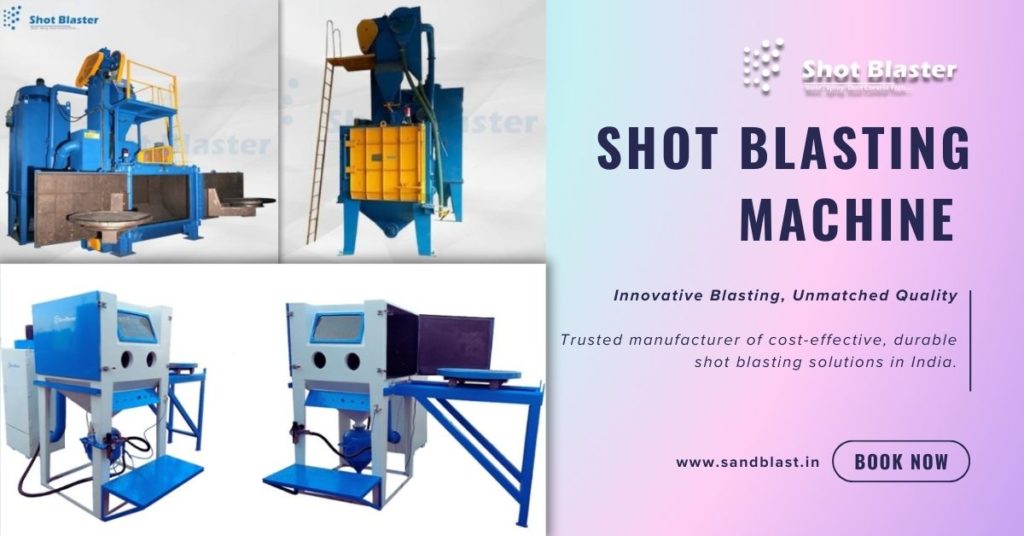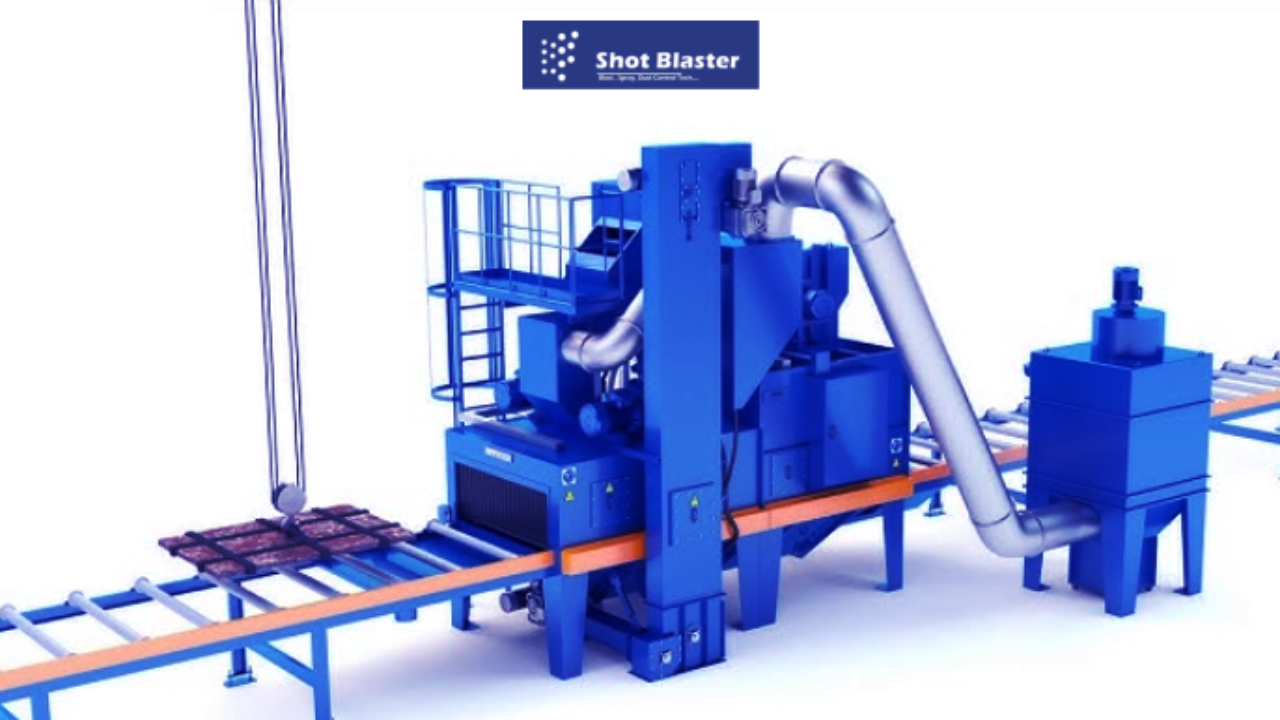Operating shot blasting machines requires precision and care. Avoid these 7 common mistakes to ensure safety, efficiency, and long-term machine performance.

Introduction
Shot blasting machines are essential tools used in various industries, including construction, automotive, and manufacturing, to clean, strengthen, and smoothen surfaces. Whether you’re removing rust from metal, prepping surfaces for coatings, or simply enhancing the quality of materials, shot blasting provides an efficient solution. However, operating a shot blaster isn’t as simple as flipping a switch and going to town. There’s a fine line between effective use and making costly errors that could harm the machine or the operator.
Unfortunately, too many operators get caught up in the hustle and overlook some critical safety precautions and best practices. And that’s where the trouble starts. In this article, we’ll walk you through the 7 common mistakes to avoid when operating shot blasting machines so you can optimize performance, reduce downtime, and ensure safety for everyone involved.
So, let’s dive in and make sure your shot blasting game is on point!
1. Skipping Routine Maintenance
The Importance of Regular Machine Care
One of the most frequent mistakes made by operators is neglecting regular maintenance. Shot blasting machines are complex and powerful, and like any heavy machinery, they require proper care to function optimally.
Why does this happen? Often, operators are either in a rush or don’t realize the value of routine maintenance. This can lead to machinery failures, reduced efficiency, and even safety hazards. Failing to check the machine’s internal components, like the blast wheel and abrasive flow, can cause wear and tear that shortens the machine’s lifespan.
What to do instead?
- Check the blast wheel for damage or excessive wear.
- Inspect the abrasive flow system regularly for blockages or signs of deterioration.
- Clean filters and air lines to prevent contaminants from clogging parts.
- Monitor the machine’s exterior for signs of rust or fatigue.
- Perform lubrication and other preventive maintenance at scheduled intervals.
Taking a few minutes for maintenance could save you hours of repair and replacement costs in the future.
Also Check – https://sbriyasingh258.blogspot.com/2025/01/how-to-choose-best-shot-blasting.html
2. Using the Wrong Abrasive Material
Know Your Material, Know Your Machine
Choosing the wrong abrasive material is another classic blunder that can lead to subpar results. Whether it’s steel shot, grit, or another material, the abrasive must match the task at hand. Failing to do so can cause uneven surface finishing or even damage to the machine.
So, what’s the problem? Certain materials may not be suitable for specific types of surfaces or may cause the shot blaster to work inefficiently. For instance, using sharp-edged abrasives on softer surfaces can lead to unnecessary wear.
How to avoid this mistake:
- Always choose the appropriate abrasive material based on the surface type and desired finish.
- Refer to the manufacturer’s guidelines on recommended abrasives for your specific model.
- Test the abrasive on a small section to see how it performs before going full throttle.
- Avoid mixing different types of abrasives unless the machine is specifically designed for it.
By selecting the right abrasive, you’ll ensure your machine performs effectively and your projects meet the highest standards.
3. Improperly Adjusting the Blasting Parameters
Get the Settings Right!
This one’s a biggie! Failing to adjust the blasting parameters, such as pressure, speed, and shot flow rate, can lead to inefficient operations and damage. Every material and surface you work with demands specific settings to achieve the best results.
Why does this happen? Sometimes operators set the blasting parameters based on assumptions or previous experience without considering the specifics of the current project.
What should you do instead?
- Always adjust the pressure and flow rate based on the material being blasted and its condition.
- Consult the machine’s user manual for guidance on optimal settings.
- Take time to test different configurations before starting the blasting process.
- Regularly monitor the pressure gauges and flow rates to ensure consistency.
Getting the settings right means more than just meeting your desired result—it also means prolonging the life of your shot blaster and increasing overall efficiency.
4. Neglecting Safety Gear and Procedures
Safety Should Be a Top Priority
It may seem like a no-brainer, but it’s easy to forget about safety when you’re focused on the task at hand. Operating shot blasting machines involves risks like flying debris, high-pressure air, and loud noise, all of which can be hazardous without the proper safety precautions.
What’s the mistake here? Many operators skip wearing personal protective equipment (PPE) or forget to follow safety protocols in an effort to save time.
What to do instead?
- Always wear protective gear, such as safety goggles, gloves, hearing protection, and a respirator.
- Ensure the machine is fitted with safety guards, and never bypass them.
- Keep the area around the machine clear of obstructions and unnecessary personnel.
- Follow all safety guidelines and regulations set by your workplace or machine manufacturer.
Don’t put yourself or others at risk—prioritize safety at all times when working with shot blasters!
5. Overloading the Machine
More is Not Always Better
When it comes to shot blasting machines, more material doesn’t always mean better results. Overloading the machine with too much abrasive or material can strain the motor, lead to inconsistent blasting, and reduce the machine’s efficiency.
Why do operators make this mistake? It’s tempting to add extra material to finish the job faster, but this only causes problems down the line.
How to avoid overloading:
- Stick to the recommended load levels provided by the manufacturer.
- Avoid crowding the machine with more than it can handle.
- Monitor the machine’s performance, and if you notice a drop in efficiency, check if the load is too heavy.
- Empty and clean the machine after each session to prevent build-up and excessive wear.
By respecting the capacity limits of your shot blaster, you’ll ensure it operates smoothly and efficiently, reducing the need for costly repairs.
6. Ignoring Environmental Factors
Weather and Temperature Matter
Did you know that environmental factors like temperature and humidity can significantly affect the performance of your shot blasting machine? Ignoring these factors can lead to inconsistent results and equipment malfunctions.
What’s the issue? If the machine is exposed to extreme temperatures or moisture, it could cause rust, poor abrasive flow, or electrical malfunctions.
What to do instead:
- Use the machine in environments with controlled temperatures, if possible.
- Store abrasives in a dry place to prevent moisture absorption.
- Always inspect the machine for signs of rust or corrosion, especially if exposed to moisture or humidity.
By keeping the machine in optimal conditions, you ensure that it runs smoothly and you achieve consistent, high-quality results every time.
Related Post – https://medium.com/@riyasingh12384/top-shot-blasting-machines-for-industrial-applications-5bcdd8a980bf
7. Lack of Operator Training
Knowledge is Power!
It’s tempting to let anyone take control of the shot blasting machine, but this is one mistake that can cause a ripple effect of problems. If operators aren’t properly trained, it’s easy to make costly errors that could damage the machine or lead to safety issues.
Why does this happen? Sometimes, companies overlook the importance of thorough training and expect operators to learn as they go.
What to do instead?
- Provide comprehensive training for all operators before they use the machine.
- Ensure operators understand the machine’s controls, settings, and safety procedures.
- Encourage operators to ask questions and seek advice from more experienced personnel when needed.
- Regularly refresh training to keep skills sharp and up to date.
Training doesn’t just prevent accidents—it also boosts productivity and extends the life of your shot blaster.
FAQs
How often should I perform maintenance on my shot blasting machine?
It’s recommended to perform daily, weekly, and monthly maintenance based on the machine’s usage. Regular checks on components like the blast wheel, filters, and airlines can prevent long-term damage.
Can I use any type of abrasive material with my shot blaster?
Not all abrasives are suitable for all tasks. Always check the machine’s manual for recommended abrasives based on the material you’re working with.
What kind of safety gear is necessary when operating a shot blasting machine?
Essential safety gear includes eye protection, ear protection, gloves, and a respirator. Always ensure you’re equipped with the proper PPE before operating the machine.
How can I ensure the longevity of my shot blaster?
Regular maintenance, correct abrasive use, proper adjustment of settings, and operator training will significantly increase the lifespan of your shot blaster.
Conclusion
Operating a shot blasting machine can be incredibly rewarding and efficient when done right, but even small mistakes can lead to big problems. By avoiding these 7 common mistakes when operating shot blasting machines, you’ll not only improve the quality of your work but also extend the life of your equipment and ensure a safer working environment.
It’s easy to get comfortable and overlook the details, but with proper training, maintenance, and attention to detail, your shot blaster will continue to serve you well for years to come. So, take a moment to revisit these tips, and you’ll be ready to blast through your projects with confidence!



Leave a Reply